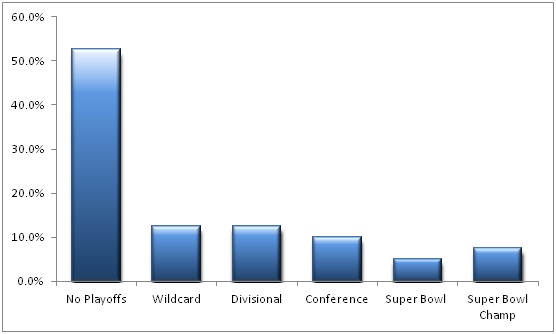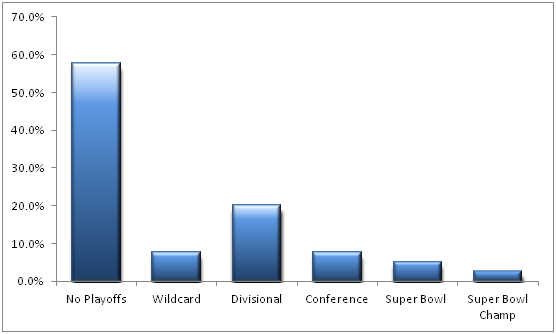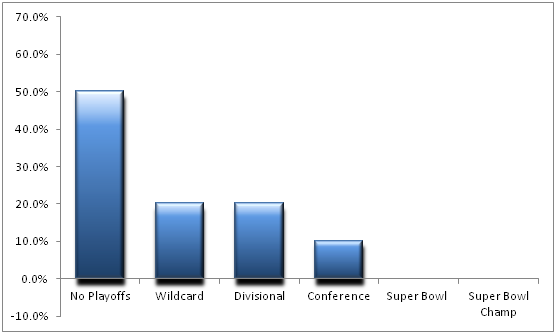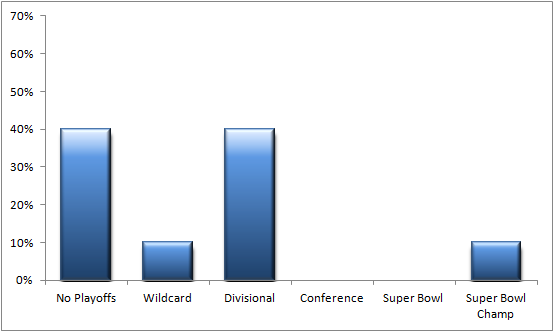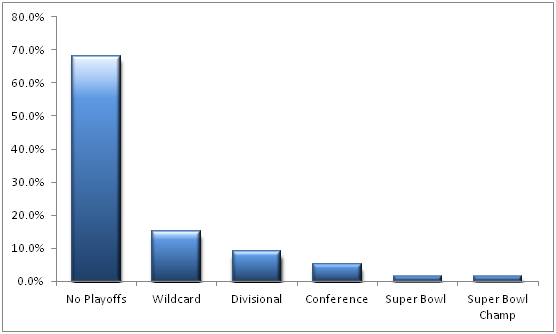Thursday night, I was thinking about the way what used to be considered correct, factual information has changed over just a few hundred years–how so much in science, for instance, of a few hundred years ago has changed. That got me thinking how today’s truths will be seen a few hundred years from now. It is an illustration of how you need to think outside of the norm and broaden your horizons of thinking to find new answers.
It made me think about MMA (Mixed Martial Arts) and how much the practice of martial arts has improved in the twenty years since the UFC (Ultimate Fighting Championship) has been founded. These athletes had to innovate, they couldn’t be caught practicing martial arts that didn’t work in a MMA fight because if they weren’t being honest about what worked, they’d get their ass kicked!
Part of creating new ways of doing things is asking what haven’t people thought of or tried yet? That’s how science has evolved. What could get us to the same goal, but in a different manner? This is the kind of thinking that created “Moneyball.” Billy Beane, as he studied the work of Bill James, revolutionized baseball because of insights such as: it didn’t matter if you got a hit or not, it mattered if you got on base or not. Beane knew that since there are only 27 outs in a game, a player’s on-base percentage—not batting average–illustrated who made less outs, thus telling you which players could extend the game by not making an out. Due to the fact that they were one of the first people to see how undervalued on-base percentage was at the time, the Oakland Athletics were able to become competitive despite a low payroll.
Watching the Arizona at Oregon game Thursday night showed another example of forward thinking in football: new ways of doing things, finding value where others don’t, etc. To build a football program that’s been down in the dumps for years, in a tough conference like the Pac-12, you have an uphill battle in recruiting and you have to be innovative. Rich Rodriguez is the perfect guy to do it. I must admit, because they’re a West Coast team, last night was the first time I saw Arizona’s offense and it was a dazzling display of creativity. It was the perfect illustration of how Rodriguez is a forward thinker, one of the fathers of the modern-day spread.
Speaking of spread offense gurus, let’s remind ourselves of Mike Leach. Why was he so innovative? It’s because he is willing to think differently. During his time as a student at BYU, he watched and studied Norm Chow’s pass-oriented offense and received a degree in American studies. He then went on to get his J.D. from Pepperdine University School of Law and a Master’s of Sports Science in Sports Coaching from the United States Sports Academy. He never even played football, let alone college football, which makes him one of the half-dozen or so FBS football coaches who didn’t. The others include Paul Johnson at Georgia Tech, David Cutcliffe at Duke, George O’Leary at UCF, and Hugh Freeze at Ole Miss.
Due to his unique background, he brought a unique perspective to college football and helped innovate the game. He brought that offense to Texas Tech for his first head coaching job and his ideas have been a major part of the passing revolution that we see today in college and the NFL.
Watching the Wildcats, it really hammered home this idea I’ve been thinking about for the last few weeks. According to Joe Rogan, the voice of the MMA, what makes MMA so exciting is the endless combinations of moves a master martial artist can throw at an adversary. This is also what makes an elite football offense today. When Georges St. Pierre was at his prime, Rogan said he was so good because there was an endless combination of things he could do with his body since he was a master at so many different martial arts. In his prime, he was strong, smart and highly skilled in literally everything you could think of: wrestling, boxing, Muay Thai, Brazilian Jiu-Jitsu, Kyokushin, karate and he even had a gymnastics coach. He was a master of his body in a way no other athlete was.
So, back to Arizona. Like Georges St. Pierre, their offense displayed prodigious variety: I couldn’t help but be wowed at the way they moved all of their skill players in unique, new, creative ways to get them in space with the football. I was even surprised at the way that Anu Solomon would roll out on play action as he seemed to take a path more toward the line of scrimmage. What Rich Rodriguez showed me is that there is always room to progress and innovate, new routes to be created and paths to be made. Some of the routes from the WRs last night seemed to remind me of basketball against a zone defense. They seemed to just go where the defense isn’t and sit down, but they weren’t running merely curl routes.
[adsenseyu1]
The main crux of Arizona’s offense, and any offense that wants to be successful, is creating confusion for the defense. In turn, the main crux of being a successful defense is creating the same confusion. Coaching, creativity and great athletes create confusion. There were multiple times during Thursday night’s game where Rich Rodriguez seemed to make the perfect play call for the situation and not only surprised the defense, but also everyone watching. He put players in positions where they’d be so wide open that even Rich Rod himself would have been able to pick up the first down.
Considering that Rodriguez and Arizona have beaten the national championship caliber Oregon teams the last two years, it seems he’s found some sort of weakness he can exploit. I think smart college coaches find a place where you can easily recruit the kind of athletes they need to be successful. Nick Saban’s offenses seem to need one game-changing wide receiver like Julio Jones (Foley, AL) or Amari Cooper (Miami, FL) I think he’d have a tougher time recruiting guys like them to a cold place like Michigan. The Southeast, Florida especially, is known for producing speedy players, hence one reason why the SEC is so dominant.. To build a great program, you have to have a pipeline to states that have the kind of players you need to run your system.
Rich Rodriguez needs athletes who are fast and incredibly athletic– a reason why he wasn’t going to work out in Michigan. It’s much easier to recruit skill players from California or Texas to Arizona, than it is to try to get Florida speed demons up north. There’s a reason the Big 10 doesn’t have the same kind of speed as the southern schools, and why the Big 10 is a lesser conference, it’s very hard to compete when you simply can’t recruit the kind of speed that the schools of the south can. It’s the same reason why my AAU baseball team had a tough time competing against the southern kids. There’s a different climate, one that allows you to run outside and play sports all year round. When these kids get to high school, they aren’t dejected by temperatures in the teens that make it too cold to even attempt to run. The climate plays a part in molding these elite athletes.
[adsenseyu2]
To my point, the two schools that have the most wide receivers in the NFL are both from the speed state, Florida: the University of Florida and the University of Miami. Florida high schools have 205 players in the NFL in 2014, or 12% of the 1699 total. Meanwhile, former Florida high school players make up 30 of the 185 WRs in the NFL or 16.2%.
Even Rutgers, starting during the Greg Schiano years built their foundation of their skill positions in Florida. In 2014, they have 15 Florida boys on the roster, five of whom are defensive backs, one wide receiver, one running back and one kicker. These are all positions where players can practice their craft and hone their skills more easily due to weather. For instance, quarterbacks and wide receivers can play in 7-on-7s all year round down south, if they choose.
In 2007, our Ramapo Football team went to the Rutgers 7-on-7 Tournament like we do every year. Other than Don Bosco Prep, who won the tournament and beat this team in the final, us northern high schools couldn’t compete with this one school from Miami, Booker T. Washington. It wasn’t just their talent that set them apart, there about 20-25 of us there from Ramapo High School and Booker T. brought only SEVEN players to an all-day 7-on-7 tournament. That’s the kind of conditioning they were in at the beginning of the summer, something we had to spend the summer working on.
Granted, they went on to go 14-0 that season with guys like Davon Johnson who had a nice career at Miami before a knee injury ended his senior year and Brandon Harris who was drafted in the second round by the Texans in 2011 and now plays for the Titans as a cornerback, but their speed and conditioning was unreal.
Michigan’s current roster has only six players from Texas, California, or Florida and they play QB, OL, DT and PK, not exactly the Rich Rodriguez style Speedsters from the South. Seriously, good luck recruiting a 5-Star WR from Florida up to the cold weather in Ann Arbor when he’s got offers from everyone in the SEC, especially when he goes to an SEC campus and sees how beautiful the wom…I mean campus is.
Also, in 2014, 138 of the 185 WRs on NFL rosters at the beginning of Week 1 went to high school in the South, so 74.6%. Meanwhile, “only” 1116 of 1699 NFL players, or 65.69% of players, went to high school in the South. That’s dominant, but not as dominant as the percentage of wide receivers. (Source: 2014 NFL Player Census; BestTickets.com).
Also according to the 2014 NFL Player Census, southern states seven of the ten states with the most NFL players per 100,000 residents, according to their high school’s state.
1) Louisiana – 1.369
2) South Carolina – 1.1
3) Mississippi – 1.106
4) Florida – 1.048
5) Alabama – 1.034
6) Georgia – 1.011
7) Montana – 0.788
8) Texas – 0.65
9) New Jersey – 0.629
10) Ohio – 0.622
So, just as I suspected, southern states are producing more NFL players per capita than northern states. I’m going to do some research into which states produce the most players at which positions.
Those Arizona running backs looked masterful at creating confusion with their speed and agility last night. They hit holes hard and with one-step and go burst that kills defenders in the open field. One guy in particular, Nick Wilson, moved with the same kind of balance and explosiveness that we saw out of Darren Sproles in Week 2 against the Colts. Wilson is freaky fast, his high school highlight tape doesn’t mess around, he’s just telling you, “zoom, zoom, zoom…zoom, zoom, zoom.” To my point, Wilson and Terris Jones-Grigsby, another quick, shifty runner, are both from California. Together, they combined for 339 total yards from scrimmage on 45 touches for 7.53 yards per touch and four touchdowns against Oregon.
That was a breakout, statement game, for Wilson–no fluke here. He’s 5’ 10”, 200 pounds, with room to bulk up as he’s only a freshman. He runs in the 4.4 range, so after what we saw last night, if he continues to develop, stays healthy and keeps his eyes on the prize, the sky is the limit with him. He’s run for 574 yards on 90 carries (6.4 average) and 8 catches for 67 yards for a total of seven touchdowns so far on the young season. The way he performed in space last night, though, is what confusing a defense is all about.
In terms of what this means from a team building perspective, you want offensive players who are fast and can catch the football, preferably guys who also have the agility and balance to make guys miss as well.
On defense, as we saw with the Seahawks in the NFL, who do not have a big burly defense, you need guys who fit the mold, but who are also fast, agile, smart, physical and who can tackle. Malcolm Smith, the Super Bowl MVP is 226 pounds, which is 12 pounds lighter than the average outside linebacker and he’s an inch shorter. That’s probably part of why he dropped all the way to the seventh round and wasn’t even invited to the combine.
When you look at their defense, you see a lot of these low draft pick players, which leads me to this question: what does Pete Carroll see in these guys that other teams don’t see? In the 2011 draft along, they got K.J. Wright, Richard Sherman, Byron Maxwell and Malcolm Smith. This Greg Rosenthal article from NFL.com sums it up nicely regarding Maxwell:
Maxwell is a perfect example of how the Seahawks do business. He quietly stayed on the sideline for nearly two and a half seasons. When he was called upon this season to replace Brandon Browner and Walter Thurmond, Maxwell was somehow an upgrade over both of them. Maxwell might be more physical than even Sherman at the line of scrimmage. He was ready for his moment, and that comes back to coaching.
The Seahawks do a great job of developing talent, so much so that they sent agents an undrafted free-agent brochure this offseason and like this NFL.com article by Dan Hanzus states that: “in the salary-cap era, locating players who are both productive and inexpensive is a surefire way to extended success. It’s really the only way.” There is no better way to increase your roster’s value than to get a player at a low cost and develop him into an important piece of your team.
They’ve been successful for the same reason that the Oakland A’s were able to take advantage of on-base percentage, because they’ve looked at the game differently and loaded their defense with fast, physical players and built up a lot of depth on the defensive line and in their secondary. At a time when other teams were investing in their passing game, the Seahawks were investing in their defense and their running game.
What’s also been key is that they have creative coaches like Dan Quinn who aren’t married to one way of doing things. As Michael Bennett said in an article on MMQB, Dan Quinn is “not married to a scheme; he wants you to grow, he changes with the players.” The article mentions that Quinn’s “open-mindedness” has helped him reach the pinnacle of his profession.
Which brings us full circle to top of this article. To be excellent, to change the way things are done, to be the best, you need to be willing to innovate, see things others’ don’t, and do things differently. If you understand the field you work in, then it’s not a risk, nor is it a crazy proposition, it’s just the way you think things should be done.
In terms of creating confusion offensively, the Eagles are a great example with players like McCoy, Sproles, Ertz, Maclin, Cooper, and Matthews. They have an array of weapons that can make plays, although they are troubled by a rash of injuries to their offensive line.
However, Chip Kelly has amassed and deploys them in a hurry-up style offense he used in college. Outsiders like Pete Carroll and Chip Kelly can bring a new perspective and innovate.
Please, in the comments below, let me know what you think about this article. I’d love to hear your perspective on this and I’d love to see what kind of questions you guys think would help us all understand this topic further.
In the next few days, I’m going to create the “All-Confusion Team,” which will be made up players who can confuse a defense because of their versatility and athleticism. I’ll go over players individually, but I’ll also put together the offense that I think, together, best exemplifies the kind of creativity and confusion that is possible with a great set of athletes working together. This offense will also be salary cap friendly and won’t outspend the highest skill position spenders in the NFL, in keeping with the spirit of what we do at Over The Cap.
@ZackMooreNFL
Total Human Optimization: Onnit
[adsenseyu2]
[adsenseyu4]
